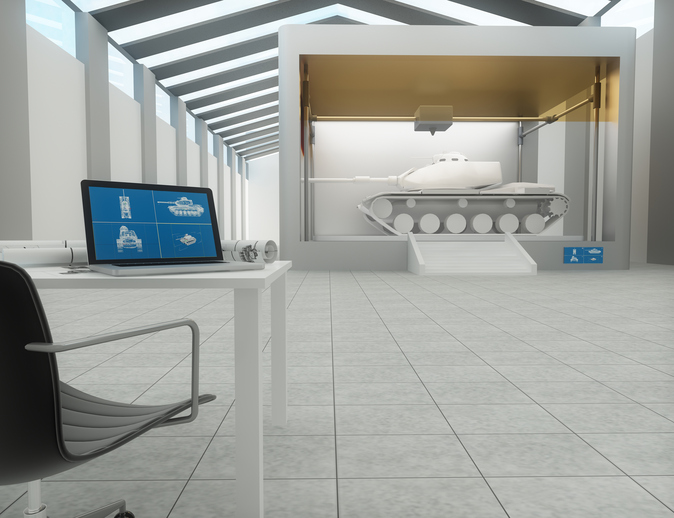 The United States is protected by one of the strongest and most technologically advanced militaries in the world. A key factor contributing to the U.S. military’s sophistication is the federal government’s use of private contractors to design and manufacture innovative solutions for the nation’s defense needs. Each year, major defense contractors—such as Lockheed Martin and Northrop Grumman—boost their net profits by seizing all of the opportunities for tax savings available to them. However, significant tax savings are not just for large companies. Small and mid-sized military and defense contractors routinely qualify for lucrative incentives like the Research and Development (R&D) or Research and Experimentation Tax Credit, but forego pursuing them due to unawareness or the mistaken belief that they are not eligible.
The United States is protected by one of the strongest and most technologically advanced militaries in the world. A key factor contributing to the U.S. military’s sophistication is the federal government’s use of private contractors to design and manufacture innovative solutions for the nation’s defense needs. Each year, major defense contractors—such as Lockheed Martin and Northrop Grumman—boost their net profits by seizing all of the opportunities for tax savings available to them. However, significant tax savings are not just for large companies. Small and mid-sized military and defense contractors routinely qualify for lucrative incentives like the Research and Development (R&D) or Research and Experimentation Tax Credit, but forego pursuing them due to unawareness or the mistaken belief that they are not eligible.
The R&D Credit was created with the goal of spurring innovation and progress within the U.S. Contrary to a common misconception, the Credit does not only reward scientific or high-tech research; it is available to businesses of all sizes in a wide variety of industries and offers a dollar-for-dollar credit for developing new or improved products, processes, or software. Defense contractors frequently perform activities that may qualify for the R&D Credit. A few examples include:
- Designing and manufacturing defense equipment
- Performing engineering calculations
- Streamlining manufacturing processes
- Improving equipment
- And many others
Recent changes have made the R&D Credit more available than ever to small and mid-sized businesses. The Protecting Americans from Tax Hikes (PATH) Act of 2015 permanently added the Credit to the tax code and expanded it for the benefit of businesses without substantial income tax burdens:
- Smaller businesses can now use the R&D Credit to offset their alternative minimum tax (AMT) burdens. To seize this benefit, a business must have had an average of $50 million or less in gross receipts over the past three years.
- New businesses, including start-ups, can use the R&D Credit to reduce payroll taxes. These businesses must have been in operation for less than six years and have $5 million or less in revenue for the current tax year, as well as no gross receipts for the preceding five years.
Although the political climate is constantly changing, a recent study conducted by the Center for Strategic and International Studies (CSIS) indicated a growing trend of the federal government awarding military R&D contracts to smaller companies. According to the study, the percentage of contracts between the government and smaller defense contractors increased from ten percent in 2009 to seventeen percent in 2015. In light of this finding—as well as the PATH Act’s expansion of the R&D Credit—now is the time for small and mid-sized defense contractors to review their activities and determine if they have conducted qualified research that may entitle them to significant tax savings.
A taxpayer’s activities must meet a four-part test in order to constitute qualified research eligible for the R&D Credit:
- The taxpayer must pursue the permitted purpose of creating a new or improved product, process, or software.
- The taxpayer must seek to eliminate uncertainty about the project. This uncertainty could relate to variables such as the optimal method of completing the project or its cost, design, or capability.
- In attempting to resolve the uncertainty, the taxpayer must undertake a process of experimentation. Such processes may range from informal trial and error to modeling or computational analysis.
- This process of experimentation must be technological in nature and must rely on the principles of engineering, physics, biology, or computer science.
Some defense contractors are under the erroneous belief that they cannot claim the R&D Credit if they conducted the qualified research for the benefit of a third party—in this case, the federal government. In reality, the IRS stipulates that if the agreement or contract is entered into before the qualified research is performed, the taxpayer bears the costs even if the research is unsuccessful, and the taxpayer retains some rights to the results of the research, the taxpayer company can claim the R&D Credit.
Given the substantial tax savings available, how can small and mid-sized defense contractors seize this valuable incentive? The amount of the Credit is based upon qualified research expenses (QREs), which encompass amounts spent on supplies and wages paid to employees in the conduct of eligible R&D activities. Taxpayers must provide extensive documentation, such as payroll reports, federal and state tax returns, and project lists. Many states also offer their own R&D tax credits, so businesses that put forth the effort to claim the federal incentive may easily qualify for additional savings.
Wondering if your business could minimize taxes with the R&D Credit? The experts at CRG can help you determine eligibility and guide you through the process of maximizing your savings. Contact us to schedule a pro bono analysis!
(Sources: https://defensesystems.com/articles/2016/09/16/defense-r-and-d-spending-small-vendors.aspx, https://www.irs.gov/businesses/audit-techniques-guide-credit-for-increasing-research-activities-i-e-research-tax-credit-irc-section-41-qualified-research-expenses).